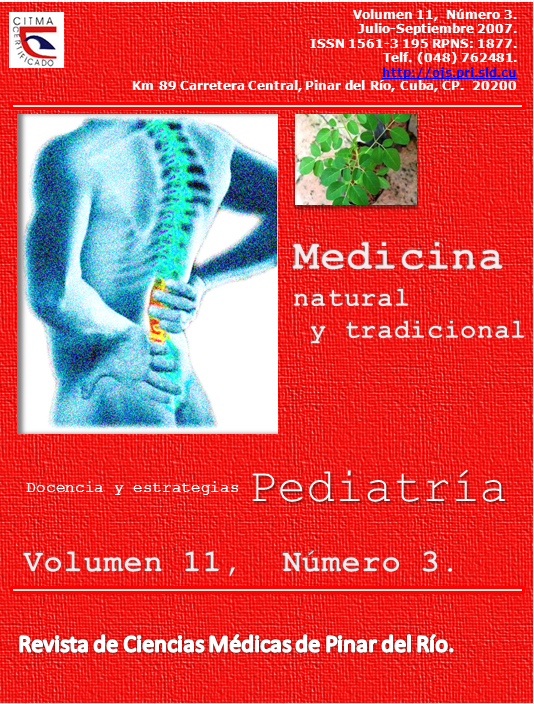Docencia en cirugía general. Una propuesta para su perfeccionamiento Teaching in General Surgery: a proposal for its training
Abstract
La metodología propia del diseño curricular para la formación de recursos humanos de la salud, se fundamenta en el enfoque histórico cultural y por tanto tiene en cuenta el aprendizaje basado en el desarrollo social de cada etapa histórico-social concreta. La Educación Superior en Cuba marcha acorde con el desarrollo de la ciencia contemporánea, esto hace que indiscutiblemente la entrada al tercer milenio tenga que estar encaminada a la formación de profesionales con una elevada calificación científico- técnica, lo cual implica que los curriculum tengan un alto nivel científico y respondan a los intereses de la sociedad. La metodología en sí misma, tiene en cuenta como punto de partida los problemas de salud y el modo de actuación profesional, este último como objetivo supremo. No obstante lo anterior, el hecho del desarrollo científico técnico acelerado en las ciencias, como es el caso de la Cirugía General, marca una nueva pauta ya que los objetivos supremos dejan de ser la esencialidad al ser superados por los contenidos, o lo que es lo mismo dejan de ser la categoría rectora obligando a nuevos diseños, como es el caso que nos ocupa.
Palabras clave: DOCENTE MEDICO, CIRUGÍA, APRENDIZAJE, ESTUDIANTES DE MEDICINA
ABSTRACT
The typical methodology for the curricular design for the training of the health human resources is based on the historical-cultural approach, bearing in mind the learning based on the social development in every specific historical-social stage. In Cuba, Higher Education goes on according to the development of the contemporary science. This unquestionably causes the entering into the third millennium to be directed to a high scientific-technical qualification of the professionals, that means that the curricula have a high scientific level and respond to the needs of the society. The methodology itself deals with the health problems and the ways of professional performance, this being the supreme objective. In spite of the above mentioned, the fact of an accelerated scientific-technical development in sciences, and that is the case in General Surgery, makes us face the dilemma that the supreme objectives are not so essential, being overcome by the contents, that is to say, they are not the principal category which leads to new designs, this being the case we are discussing.
Key words: FACULTY MEDICAL, SURGERY, LEARNING, MEDICAL STUDENTS.
Downloads
How to Cite
Issue
Section
License
Authors who have publications with this journal agree to the following terms: Authors will retain their copyrights and grant the journal the right of first publication of their work, which will be publication of their work, which will be simultaneously subject to the Creative Commons Attribution License (CC-BY-NC 4.0) that allows third parties to share the work as long as its author and first publication in this journal are indicated.
Authors may adopt other non-exclusive license agreements for distribution of the published version of the work (e.g.: deposit it in an institutional telematic archive or publish it in a volume). Likewise, and according to the recommendations of the Medical Sciences Editorial (ECIMED), authors must declare in each article their contribution according to the CRediT taxonomy (contributor roles). This taxonomy includes 14 roles, which can be used to represent the tasks typically performed by contributors in scientific academic production. It should be consulted in monograph) whenever initial publication in this journal is indicated. Authors are allowed and encouraged to disseminate their work through the Internet (e.g., in institutional telematic archives or on their web page) before and during the submission process, which may produce interesting exchanges and increase citations of the published work. (See The effect of open access). https://casrai.org/credit/



